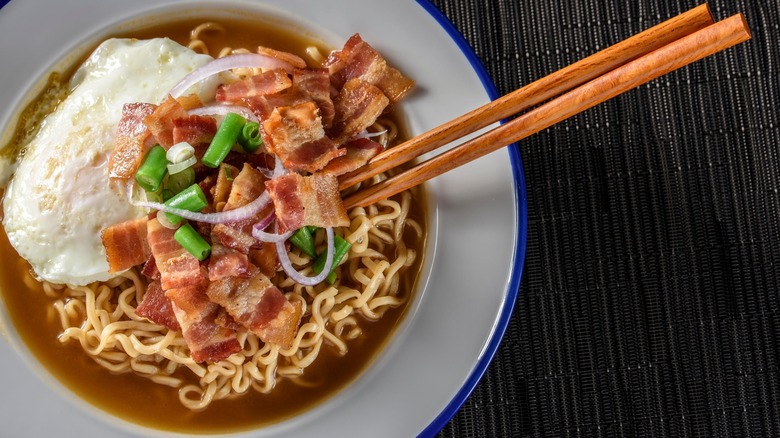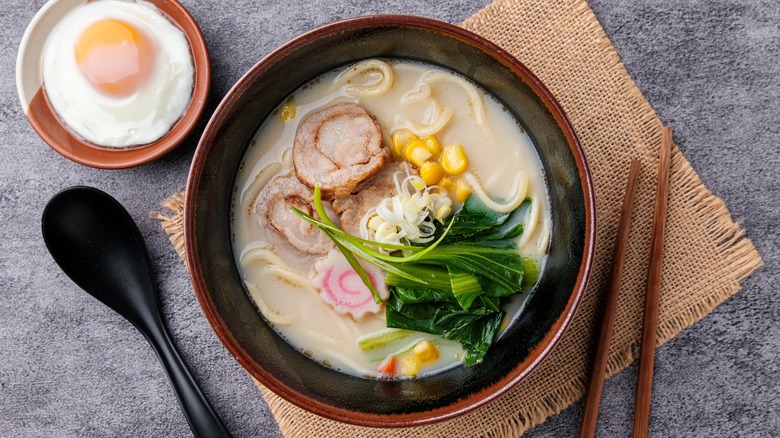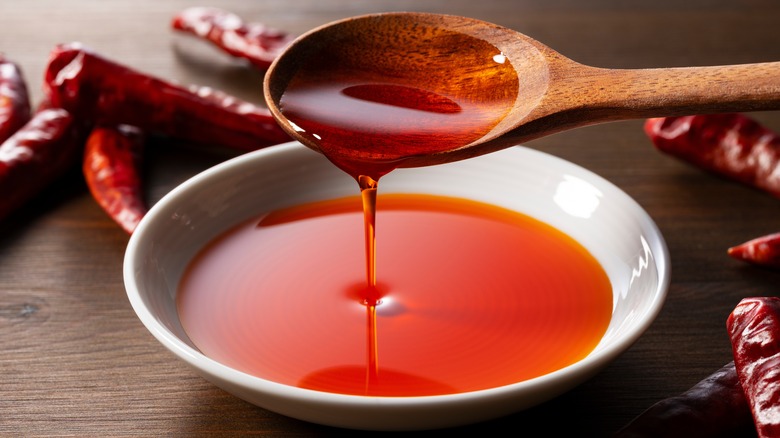The Fatty Addition Your Store-Bought Ramen Needs
Store-bought ramen, whether it be in instant ramen noodle cups or a stovetop brand, is an easy and delicious comfort meal to make and lends itself well to plenty of ingredients you may want to add to it. One delectable ingredient to try is bacon grease. I know what you are thinking: "Bacon makes everything better," and you would be correct!
Bacon, in general, is a popular food item with an average American eating around 18 pounds a year. It's a good bet to say have some in your fridge right now! The famous breakfast food is known for its salty and smoky flavor, which can enhance an array of dishes, including your typical store-bought ramen. The next time you head to Walmart or Target, be sure to pick up a package of bacon along with your favorite ramen to try this dish out.
Bacon grease gives ramen a porky flavor
One popular and traditional pork-based ramen is Tonkotsu ramen. The word "Tonkotsu" translates to pork bone in English. The dish has a white and rich broth due to how it is cooked, which involves boiling pork parts and neck bones using high heat in water. This process results in a thick, silky, luxurious texture and a rich pork flavor.
However, the process of making the broth alone can take anywhere from six to 16 hours and that doesn't include cooking any of the other ingredients, such as the noodles and meat itself. If you don't have the time, then adding a splash of bacon grease to your store-bought ramen can do the trick to ensure you get the pork-filled flavor you were hoping for.
Whether you like thick-cut bacon that is usually 1/8-inch thick or regular, which is around 1/16-inch thick, there is usually a good amount of grease left in the pan that can be drizzled over the ramen to finish or added in during the cooking process.
Other flavor enhancers to put into ramen
There are plenty of other ingredients you can add to your ramen to enhance the flavor, such as butter, which makes it creamier. Another delicious option would be cheese, whether sliced or shredded. This is something I do often. When stirring in your seasonings, throw the cheese on top and mix it all together with a fork until the broth thickens.
If you want to double up on your oil consumption while cooking your weekly craving for ramen, there are a few other options to enhance the broth and noodles. The first is sesame oil, which is used in many Chinese, Japanese, and Korean dishes, among others. As someone who uses it frequently when making homemade dishes such as beef bulgogi and fried rice, it is safe to say that a little goes a long way.
Lastly, for those who enjoy a bit of heat and spice, chili oil is a great option to drizzle on top of your ramen regardless of if you are using chicken, pork, or a beef-flavored kind.


